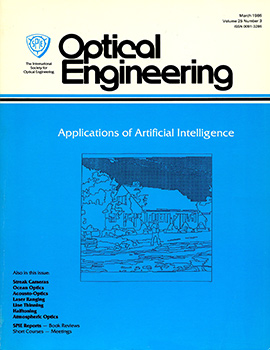N. Kopeika, A. Seidman, Its'hak Dinstein, C. Tarnasha, R. Amir, Y. Biton
Optical Engineering, Vol. 25, Issue 3, 253505, (March 1986) https://doi.org/10.1117/12.7973850
TOPICS: Atmospheric particles, Meteorology, Turbulence, Aerosols, Image resolution, Humidity, Spatial frequencies, Scattering, Modulation transfer functions, Temperature metrology
Calculations are made of regression coefficients in both the wavelength and spatial frequency domains for relative humidity, air temperature, and wind speed, with respect to atmospheric contrasts as measured over a three-year period. Significant changes are noted between summer and winter, including some sign changes and opposing wavelength dependences. Analysis of spatial frequency data permits determination of the effects of each meteorological parameter on background, turbulence, and aerosol modulation contrast functions separately. Results indicate that in the rainy season, when the atmosphere is freer of airborne soil-derived particulates, turbulence is dominant in limiting imaging resolution through the atmosphere, with wavelength dependence determined primarily by background and for ward scattering effects associated with humidity. Resolution is best in the near-infrared. However, in the dry season image quality is limited primarily by large airborne particulates and their effects on atmospheric background and spatial frequency dependent multiple forward scattering phenomena. In this case, resolution is best at short wavelengths. The strong wavelength dependences on small and large radii aerosol related effects suggest the possibility of predicting imaging resolution spectral dependence in advance in accordance with meteorological predictions. Analysis of regression coefficients in the spatial frequency domain permits quantitative determination of the effects of each meteorological parameter on each type of atmospheric MTF, i.e., background, aerosol, and turbulence MTFs, separately. In this way insight is gained not only as to the extent to which each meteorological parameter affects imaging resolution but also as to the basic mechanism of the effect.



 Receive Email Alerts
Receive Email Alerts